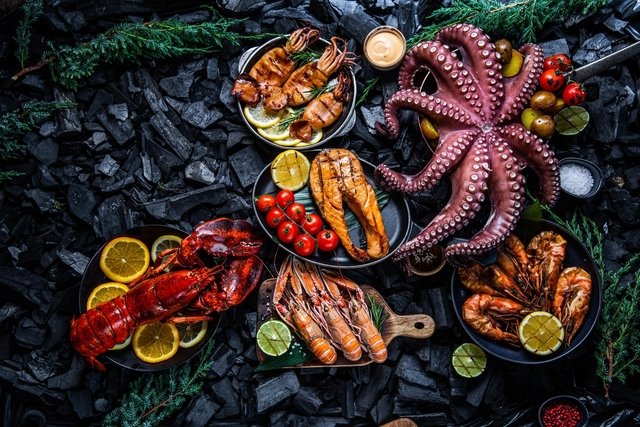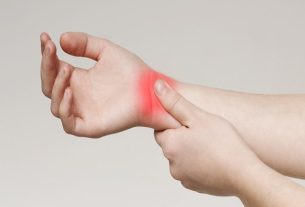The gout diet aims to reduce the consumption of foods rich in purines, a type of protein that, in excess, increases uric acid levels in the body and is found mainly in red meat, fish, such as tuna and sardines. , and seafood.
A balanced diet is essential for reducing uric acid levels in the blood and helping to treat gout. Therefore, it is recommended to prioritize the intake of healthy and natural foods, such as whole grains, fresh fruits and vegetables, and milk and dairy products with low fat. Understand better what gout is and how to treat it.
In addition, it is also important to drink around 2 liters of fluids per day, which may include water and herbal teas, as these drinks help eliminate excess uric acid from the body through urine, preventing gout.
See the video below for other suggestions on how to follow a gout diet:
Foods that should be avoided
Foods that should be avoided during a gout attack are:
- Alcoholic beveragessuch as liquor, wine, and beer;
- Viscerasuch as heart, kidneys, gizzard and liver;
- Artificial sauces and seasoningssuch as ketchup, mustard, mayonnaise and salad dressings;
- Sausagessuch as sausage, ham, salami or mortadella;
- Excessive red meat, such as beef, pork or lamb;
- Seafood, such as oysters, shrimp, octopus, squid, mussels and scallops;
- Some types of fishsuch as anchovies, herring, mackerel, cod, salmon and sardines;
- Refined cerealssuch as white rice, white bread or white pasta;
- Foods high in fructosesuch as soft drinks, fruit juices, chocolates, cakes, cookies and ice cream.
These foods should be avoided whenever possible to prevent an increase in uric acid and the onset of gout attacks. See other foods that can increase uric acid.
In addition to food, it is also essential to lose or maintain adequate weight, as obesity and overweight are one of the causes of high uric acid in the blood.
Foods that should be consumed in moderation
Foods such as eggs, lean beef, skinless poultry and fish that were not mentioned above can be consumed in moderation. Therefore, you should consume a portion of between 60 and 90 grams of meat, fish or poultry per day.
Some people report that some foods such as strawberries, oranges, tomatoes and nuts trigger gout attacks, however these foods are not rich in purines. Furthermore, there is no scientific evidence that confirms that these foods cause gout attacks.
Allowed foods
During gout treatment, it is recommended to prioritize foods with low amounts of purines, as well as foods with good amounts of water, vitamins and fiber, such as:
- fresh vegetables, such as watercress, carrots, tomatoes, pumpkin, onions, cucumbers, broccoli, cauliflower, spinach, asparagus, tomatoes and lettuce;
- Fresh fruit, such as apple, orange, watermelon, lemon, passion fruit, strawberry, melon;
- Low-fat dairy productssuch as skimmed milk, low-fat yogurt and white cheeses, such as ricotta or cottage cheese;
- Legumes, such as chickpeas, beans, lentils and soybeans;
- Whole grainssuch as brown rice, corn, whole-grain pasta or whole-grain bread.
Furthermore, foods such as olive oil, flaxseed, sesame and pumpkin seeds have anti-inflammatory and antioxidant properties, helping to eliminate toxins from the body, reducing joint pain and inflammation. Discover other foods rich in antioxidants and anti-inflammatories.
Some foods, such as cauliflower, asparagus, beans and chickpeas, are high in purines, however, these foods do not increase uric acid. This happens because the types of purines present in greater quantities in vegetable foods, such as adenine and guanine, do not cause an increase in uric acid levels in the body.
Diet menu for gout
The following table provides an example of a 3-day gout diet menu:
This menu is just an example to include in the diet, as recommendations vary according to gender, current weight, physical exercise and the person’s general health. Therefore, it is advisable to consult a nutritionist to carry out a complete assessment and create a dietary plan according to individual needs.
To find out how to follow an individualized diet for gout, make an appointment with the specialist closest to you:
Taking care of your health has never been easier!
Bibliography
- CLEVELAND CLINIC. Treatments and procedures: Gout low purine diet. Disponível em: <https://my.clevelandclinic.org/health/treatments/22548-gout-low-purine-diet>. Acesso em 23 ago 2022
- JAKSE, Bostjan et al. Uric Acid and Plant-Based Nutrition. Nutrients. vol.11. 8.ed; 1-15, 2019
- LI, Rongrong et al. Dietary factors and risk of gout and hyperuricemia: a meta-analysis and systematic review. Asia Pacific Journal of Clinical Nutrition. Vol.27. 6.ed; 1344-1356, 2018
- VALSARAJ, Rahul et al. Management of asymptomatic hyperuricemia: Integrated Diabetes & Endocrine Academy (IDEA) consensus statement. Diabetes & Metabolic Syndrome: Clinical Research & Reviews. Vol.14. 2.ed; 93-100, 2020
- BRAZILIAN SOCIETY OF RHEUMATOLOGY. Drop. Available at: <https://www.reumatologia.org.br/doencas-reumaticas/gota/>. Accessed on October 14, 2021
- PORTUGUESE NUTRITION ASSOCIATION. The Role of Food in the Treatment of People with Gout. 2021. Available at: <https://www.apn.org.pt/documentos/ebooks/EBOOK_O_Papel_daAlimentacao_noTratamento_daPessoa_comGota.pdf>. Accessed on October 14, 2021
- MAYO CLINIC. Gout diet: What’s allowed, what’s not. Disponível em: <https://www.mayoclinic.org/healthy-lifestyle/nutrition-and-healthy-eating/in-depth/gout-diet/art-20048524>. Acesso em 14 out 2021
- Stephen P Juraschek, MD, PhD, Mara McAdams-Demarco, PhD, Allan C Gelber, MD, PhD, Frank M. Sacks, MD, Lawrence J Appel, MD, MPH, Karen White, MS, RD, and Edgar R Miller, III, MD, PhD. Effects of Lowering Glycemic Index of Dietary Carbohydrate on Plasma Uric Acid: The OmniCarb Randomized Clinical Trial. Arthritis Rheumatol. 68. 5; 1281–1289, 2016

Sign up for our newsletter and stay up to date with exclusive news
that can transform your routine!
Warning: Undefined array key "title" in /home/storelat/public_html/wp-content/plugins/link-whisper-premium/templates/frontend/related-posts.php on line 12
Warning: Undefined array key "title_tag" in /home/storelat/public_html/wp-content/plugins/link-whisper-premium/templates/frontend/related-posts.php on line 13





